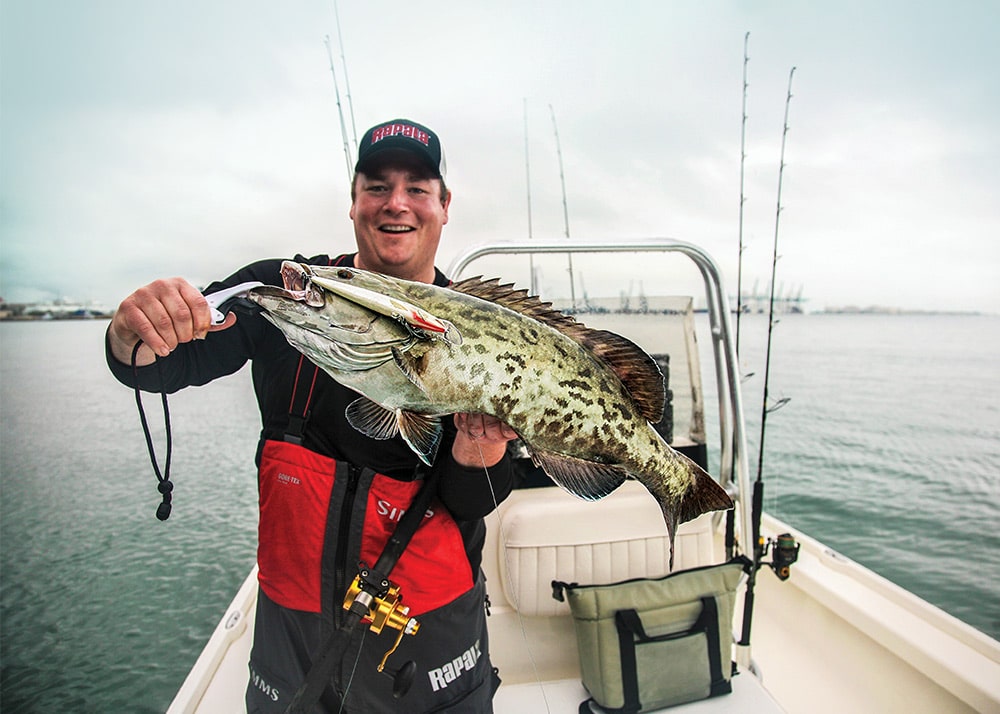
Capt. Tom Daffin and I ran 15 miles north of Atlantic City, New Jersey, looking for beachfront striped bass. We trolled three 16-ounce Mojo lures and two Rapala X-Rap Magnum deep divers. The Mojos, a striper trolling standard, scored well. But the swimming plugs kept pace with them, and at day’s end, lighter swimming plugs resulted in fewer pulled hooks.
Easy as Sunday Morning
Swimming plugs require no laborious rigging (as do natural baits). They’ll swim from just beneath the surface to depths exceeding 40 feet, wobbling and throwing off fish-attracting vibrations. They’re one of the most potent, low-maintenance trolling baits ever.
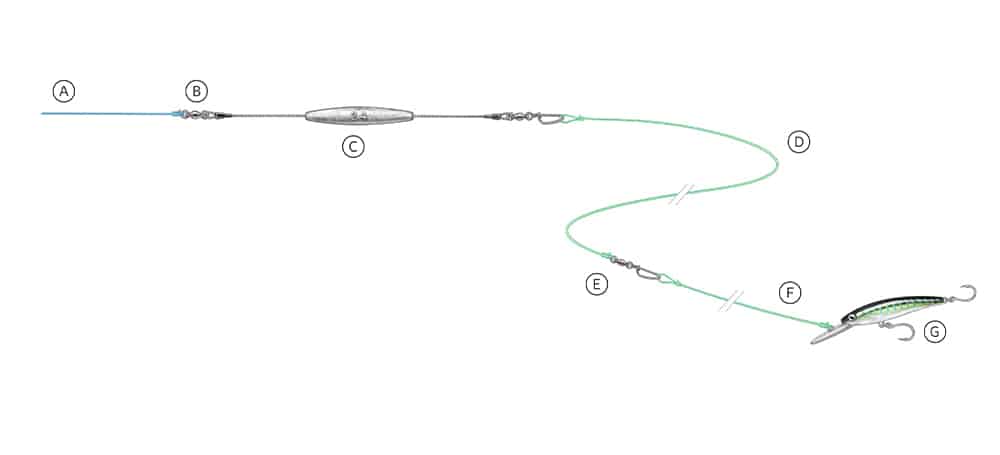
Know Your Plug
The proper swimming plug for trolling should reach the portion of the water column where target species hold. This is more crucial than color. On a recent snook trip with Miami guide Gavet Tuttle, we bounced jigs around docks, bridge pilings and jetties until sunset. Prior to quitting, we made several passes through Haulover Inlet, pulling a single diving plug. The inlet averages 15 feet deep, and the snook ambush tide-swept forage around bottom structure.
To position the plug within that strike zone, I held the rod tip inches from the water and periodically free-spooled until the plug bumped bottom; I then reeled it up a few turns and held that depth. On the initial pass, I caught a beauty of a snook. After its release, we proceeded to fool a couple more.
By comparison, during my Atlantic City trip, the stripers were holding halfway down the water column at 50-foot depths, so Tom Daffin positioned our lures between 15 and 25 feet deep.
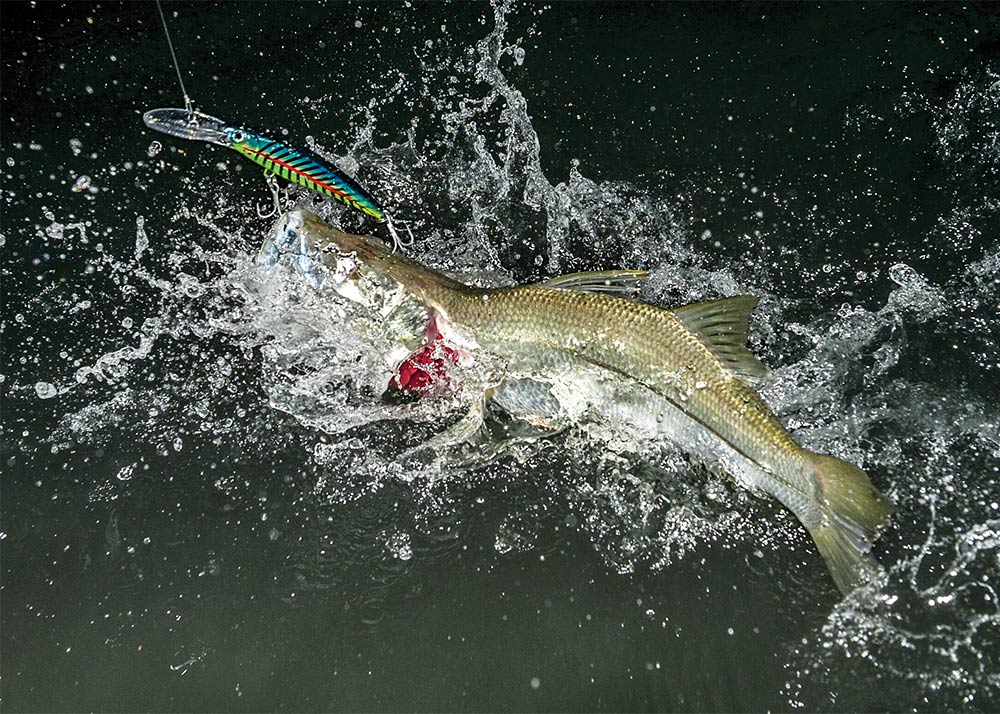
Pluggin’ Offshore
Swimming plugs know no boundaries; they’re deadly offshore, nearshore and within bays and sounds. Positioning them where the fish are is of utmost importance. However, size does come into play.
On the Islamorada and Marathon humps in the Florida Keys, and other zones where blackfins congregate, trolling a pair of medium-size swimming plugs is a fast way to catch 5- to 10-pound-class tuna. The Rapala CD Mag 14, regardless of color, is an ideal size.
Fine-tuning requires 30-pound fluoro leaders, positioning them approximately 150 and 200 yards back, and maintaining 10 knots. When one rod sings, keep the boat moving until another fish clobbers the other plug.
Back up Jersey way, Capt. Joe Trainor trolls the 30- and 40-foot divers on 175-pound monofilament leaders some 100 to 130 feet back and at around 6½ knots. “We troll them for yellowfins, bluefins and bigeyes,” Trainor says. “We troll two plugs when bigeyes are around, and a single for other species. We pull them off flat lines, up close so they don’t mess with the rest of the spread. Makos love them, as do wahoo.”
When trolling natural baits offshore at around 8 knots, I’ve been adding a diving plug straight off my transom, where it swims behind and just underneath the fading prop wash. Again, color doesn’t seem as important as placement; I’ve pulled them with success in purple, a mahi pattern and a few other hues. That outfit has done well with dolphin and wahoo. And this past summer with South Florida radio personality Paul Castronovo aboard, a blue marlin whacked at it a few times; it never got hooked, unfortunately, but it proved game fish do know it’s there.
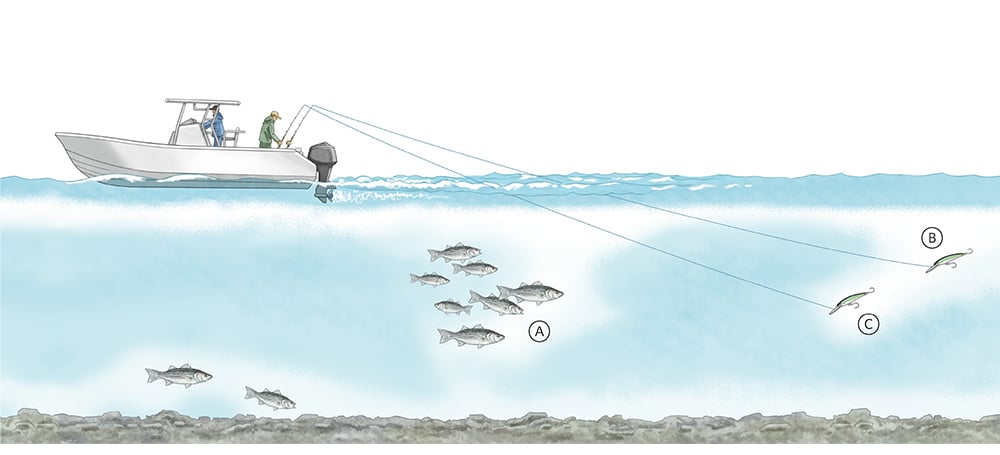
Bend Them Butts!
For more serious offshore plug trolling, and to maximize the lures’ depth potential, bent-butt rods and reels filled with braided line offer distinct advantages. The lines enter the water at a flatter angle, so the diving plugs run deeper and hold better at faster speeds. What’s more, the thin-diameter braid cuts through the water with considerably less resistance than monofilament. I suggest 50- and 65-pound braid for most offshore plug trolling.
Rigging
Monofilament and fluorocarbon leaders glean the most strikes. For snook and grouper trolling, where heavy drags and harsh structure are the norm, we rig with 80-pound fluorocarbon. For trophy-class stripers in roiled waters, you can get by with 100-pound leader.
For general offshore trolling, my plugs are rigged to 100-pound fluoro. And unless specifically trolling for wahoo, where cable gets the nod, stick with mono or fluoro leaders; you’ll get far more strikes, albeit at the risk of losing a plug or two. This past spring off Venice, Louisiana, Billy Wells and I trolled up seven wahoo from under a floating buoy before one finally sliced the leader ahead of the plug. That’s not a bad trade-off.
An overhand loop knot gives the plug more latitude to swim to its fullest potential. To thwart line twist, use a swivel to join the leader and fishing line. Norwalk, Connecticut’s Rick Mola, owner of Fisherman’s World Tackle Center, prefers a snap swivel to join the plug and leader, reasoning that it prevents line twist and facilitates a fast changing of plugs. Either way, the swivel should be strong enough for the tackle, or it may fail.
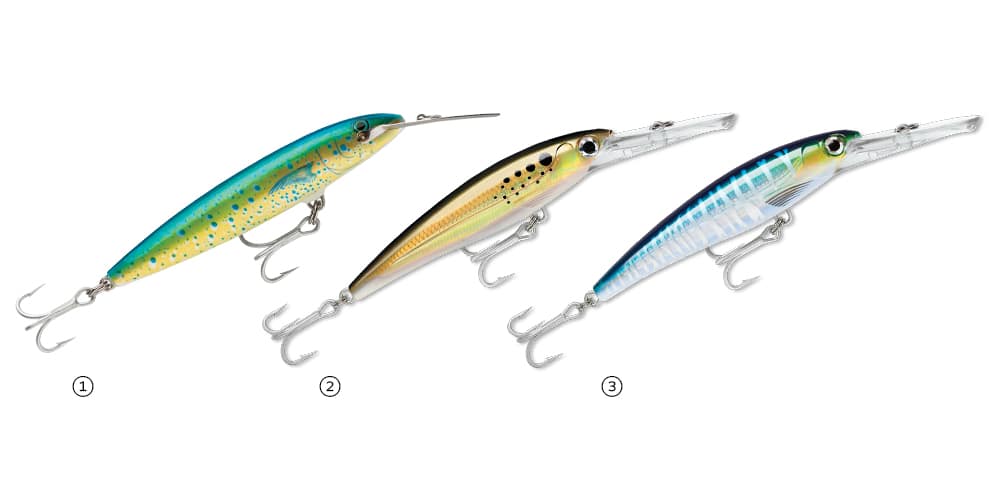
[2] With a beefed-up lip, the Rapala X-Rap Magnum 30 dives to 30 feet.
[3] The Rapala X-Rap Magnum 40, with a longer, broader lip, runs easily at 40 feet deep. Courtesy Rapala
Work That Rod!
Inshore and nearshore plug-pulling requires finesse, as compared to offshore trolling where rods remain in holders until a strike. When grouper trolling along the rock piles off Florida’s west coast, within estuaries or in the Intracoastal Waterway, hold the rod and keep the tip aimed at the water. Let out line until the plug bumps bottom, reel it up a few feet, and remain in this zone. Reel up the plugs just enough to avoid snagging them on rocks or bottom peaks, and once beyond the threat, drop the plug back down. Conversely, if the bottom deepens, pay out more line to position the plugs in the strike zone.
Read Next: How to Catch Wahoo Anywhere
Continue moving forward after hooking up. This will help pull a grouper, snook or striped bass away from its lair and keep it off balance; ultimately, it will also plane it up. As your quarry nears the boat, throttle down to a crawl and scoop it up. Staying on the move also keeps the second plug in play for a possible doubleheader.
If you want to score a variety of game easily, put those diving plugs to work.









